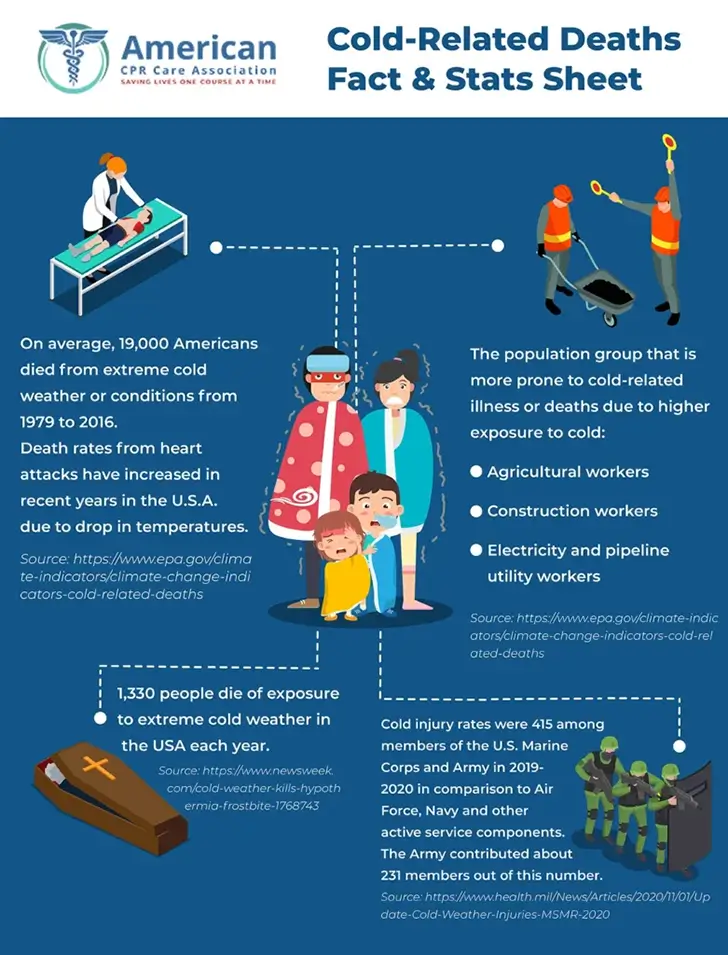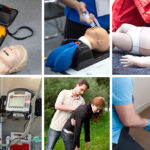Frostbite is a serious condition that happens when your skin and tissues freeze under unbearably cold weather. When you get frostbite, it will affect your face, ears, fingers, and toes most likely. It is a dangerous situation that can cause permanent damage if there is no first aid given for frostbite within the next few minutes of this emergency. That’s why you must know the right and accurate steps to tackle frostbite. Such knowledge will help you and others if they end up having frostbite in front of you.
To get into the depth of this topic, read the blog post below. You will get ample information on how to prevent frostbite and learn first aid to treat frostbite. Once you are aware of this medical condition, you can always look out for the free first aid certification course from the American CPR Care Association. The course follows updated guidelines by the American Heart Association (AHA). So, without further delay, let’s catch up on the ways to prevent frostbite and be responsible when you’re there in freezing conditions.
How To Prevent Frostbite?
We all want to steer clear away from frostbite-like situations, especially since we know nothing about it yet. There are some things that you can follow as cautionary measures to prevent frostbite. Pay attention to these pointers below and be safe when you think there could be a chance for you to catch frostbite.
Dress warmly:
Let’s be cautious when you go in extremely cold weather; that means it is heavily snowing outside. Wear enough warm clothes like an inner sweatshirt, gloves, monkey cap, socks, and boots. You can get insulated boots from the market that help you tread or walk over snow effectively.
Pay attention to the recent weather forecast:
The best way to avoid getting frostbite is to avoid going to such places. How will you do that, you may wonder. But the answer is easy. Read the recent weather forecast for this place. For example, you might be planning a holiday to a hill station in the off or winter seasons. Many people love enjoying winters and snowfall. But it doesn’t mean you can tolerate frostbite. So it is always best to be safe than catching frostbite and regretting it later.
Don’t expose your hands and feet to cold for long:
You might already be out in the weather to enjoy it alone or with family. But at least you should be alert of your body temperature or that of others with you. If you think you are starting to shiver or not having sensations in your feet or hands, the best is to move inside. And so is the advice for your near and dear ones if they are with you at the same time.
Keep your body warm:
Another way to prevent frostbite is to stay active. Your body needs warmth to tackle the icy weather outside. For that, you need to keep moving. You can do some activities like light exercises while you’re out. This way, you wouldn’t even have breathing issues, and the blood circulation will flow better for a longer period.

7 Steps Of First Aid To Treat Frostbite
Step 1: You need to be out of the cold as soon as possible. If your toes are frostbitten, for example, don’t walk around. Keep your toes on an elevated level and let them warm up a bit. The tingling sensation will go away after a few minutes.
Step 2: You need to warm the frostbite area. To do this, immerse your affected area in warm water. Be aware, though. The water mustn’t be too hot to handle. Keep the temperature of the water between 104-108 Fahrenheit for best results.
Step 3: Dry the affected area and cover it nicely with warm clothes. You can also use a sterile bandage or clean cloth to clean the area after drying it up nicely.
Step 4: You need to reduce the swelling in the frostbitten area. To do so, keep it elevated for a while.
Step 5: After 30 minutes or so, you can take over-the-counter medicines to get slight relief from the pain. This is as per the usual first aid for frostbite standards.
Step 6: If you think the frostbite is not going away, you need to consult a doctor. Seek help from someone nearby or call the doctor yourself. Either way, a doctor can help you prescribe the right medicine after seeing the condition of the frostbitten area.
Step 7: If there are blisters, do not think of picking on them or breaking them. It might leave a burning feeling afterwards. And that would hurt a lot more. Leave the blisters alone, and make sure to keep the area dry to avoid adverse effects.
Conclusion:
When you are out in freezing weather for a long time, you might end up getting frostbitten. But to avoid permanent damage, knowing the right first aid for frostbite steps is essential. To tackle more such medical conditions to safeguard your life whenever possible, learn the nationally accredited first aid certification course from American CPR Care Association.







